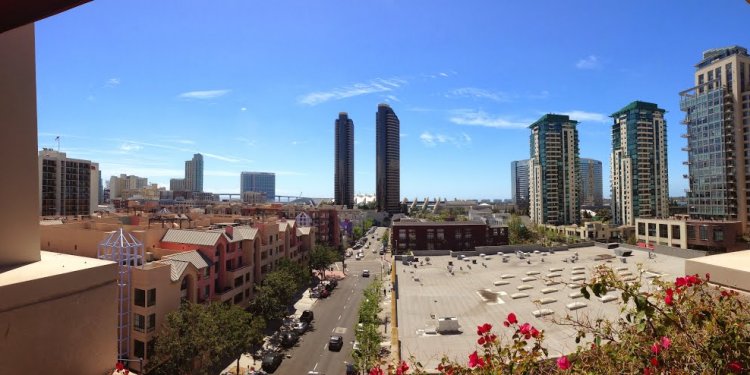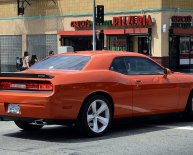
Nordstrom Cafe, San Diego
Westfield announced Monday that it will buy the Nordstrom building at Horton Plaza shopping center, but did not say what it would do when the department store closes in August.
Nordstrom, which was one of the original anchors at Horton Plaza when it opened Aug. 9, 1985, said Friday it would close the 144, 000-square-foot outlet on Aug. 26. The purchase price was not disclosed.
The chain, mall and downtown boosters tried to spin the move-out as a positive development for downtown’s evolution. But real estate experts say it simply reflects changing consumer preferences and decades-old formulas that no longer work.
Westfield spokeswoman Katy Dickey said buying the Nordstrom building opens up “a range of opportunities and new prospects” that can “introduce new life, energy and choices to the property.”
In its unexpected announcement last week, Jamie Nordstrom, president of stores, said, “These are tough decisions to make, but in taking a look at the store’s performance and our business needs into the future, we believe this is the best direction to take.”
The approximately 180 nonseasonal employees are being offered jobs at Nordstrom’s seven other local locations.
Gary London, a local real estate economist and consultant, said Nordstrom and the rest of Horton Plaza were predicated on appealing to a market far beyond downtown by offering an unusual layout that was a trendsetter then.
“It was considered the most edgy, provocative shopping center in the nation, ” he said. “Over the years, that concept has faded away. It’s no longer considered unusual or interesting.”
As for Nordstrom itself, London said the company seems to aiming for a higher-end shopper, judging by its plans for a more upscale replacement store at Westfield’s UTC center.
As shopping increasingly occurs online, the concept of a mall anchor is broadening beyond department stores to other attractors, such as a hotels, brew pubs, night clubs and various forms of entertainment and upscale dining.
“It’s just that what’s going on now is the slicing and dicing of the anchor, ” London said.
He guessed that Westfield was slightly “nudging” Nordstrom to leave so that its space could be replaced by something more successful.
Westfield has been considering various options for the center, which it acquired nearly 20 years ago from the original developer, Trizec’s Ernest W. Hahn Inc. Hotels, apartments, offices and a reconfiguration of the retail levels have been in the mix. Westfield also has to decide whether to phase in the changes or close the entire center and spend a year or more redeveloping it.
Kris Michell, president and CEO of the Downtown San Diego Partnership business group, said based on her conversations with Westfield she is “thrilled” with the new direction that is likely to be taken.
“There’s no one that loves Nordstrom more than me, ” Michell said, “but I am so excited about the future of the center — there’s a real opportunity.”
Back in 1982, when Ernest Hahn signed Nordstrom to replace two of the original department stores planned at the center, Buffums and Montgomery Ward, Nordstrom leaders were happy to be going downtown and professed no concern about operating in an urban center with homeless problems and other issues.
“The appeal is the redevelopment, ” said then-company president James F. Nordstrom, father of Jamie Nordstrom. “We like downtowns. We’ve spent a lot of money expanding in Portland and Seattle and have done well.”
Developer Hahn also said in 1982 that he had dreamed of luring upscale Nordstrom to Horton Plaza after having signed it to move into University Towne Centre and the upcoming North County Fair (now called Westfield North County) in Escondido. Nordstrom opened its first San Diego store in 1981 at Fashion Valley and continues to operate four Nordstrom Rack discount outlets locally.
But in recent times, Nordstrom, like all department stores, has faced rapidly changing consumer preferences and the shift to online shopping. Many malls have converted department stores — dubbed anchor stores — into other uses, such as gyms, theaters and specialty shops. Nordstrom stock has dropped more than 50 percent from its 52-week high to $36.20 and Zacks Equity Research last week recommended shareholders sell their stakes.
“Nordstrom operates in a highly fragmented specialty retail sector and faces intense competition from other well-established players, ” Zacks said.
In recent years Nordstrom has closed stores in Florida, Oregon and Georgia, and opened others in New York, Texas, Wisconsin and Canada. A company spokeswoman said since 1990 the chain has closed 17 locations and opened 270 others.

















